ABOUT YOUR VISIT AND CONSULTATION
STEP 1- CONSULTATION
You may wish for an initial consultation with a sleep specialist to further determine your risk for OSA. The initial visit can be done via Zoom video meeting, or at one of our local offices.
Alternatively, if you prefer to have the sleep study without a consultation, fill out a comprehensive questionnaire, and click submit. We will be in touch within 24 business hours of receipt to discuss the details.
STEP 2 – PICKING UP THE DEVICE
Pickup/dropoff is free. The device is very easy to use and will include both video and written instructions. If you live outside of a 30 mile radius from all of our offices, please ask about our mailing options. We offer mailing from external companies.
STEP 3 – RESULTS
Within 2 weeks of completing the sleep study, your results and recommendations will be mailed to you.
Sometimes the results can be surprising or unexpected. In these cases, we recommend you speak with a sleep specialist. We have sleep specialists available both in person and via Zoom. Alternatively, you can bring your results to your primary care provider for review.
STEP 4 – TREAMENT OPTIONS
If your results reveal that you do have sleep apnea, there are multiple treatments you may wish to seek out. They include:
- Continuous Positive Airway Pressure (CPAP)
- Minimally invasive procedures or surgery designed to open the upper respiratory
airway - Seeing a dentist who can make an oral appliance which favorably positions your
tongue and jaw at night to maintain an open airway - Weight Loss and Smoking Cessation
SLEEP QUIZ
The STOP-Bang Questionnaire to screen for Obstructive Sleep Apnea (OSA) is a helpful tool to guide clinicians in determining which patients may be at greatest risk of OSA. It, however, is not the only factor to consider when determining who to screen and has a possibility of false positives. Please use this questionnaire as a guide to help determine your risk of OSA but do not confuse the results for a diagnosis of OSA.
WHAT IS SLEEP APNEA?
Obstructive sleep apnea (OSA) is a sleep-related breathing disorder that involves a decrease or complete interruption in airflow despite an ongoing effort to breathe. It occurs when muscles relax during sleep, causing soft tissue in the airway to collapse and block the upper airway. This leads to partial reductions (hypopneas) and/or complete interruptions (apneas) in breathing that last at least 10 seconds each during sleep. Most pauses last between 10 and 30 seconds, but some may persist for one minute or longer.
This can lead to abrupt reductions in blood oxygen saturation, with oxygen levels falling as much as 40 percent or more in severe cases. The brain responds to the lack of oxygen by alerting the body, causing a brief arousal from sleep that restores normal breathing. This pattern can occur hundreds of times in one night. The result is a fragmented quality of sleep that often produces an excessive level of daytime sleepiness. Most people with OSA snore loudly and frequently, with periods of silence when airflow is reduced or blocked. They then make choking, snorting or gasping sounds when their airway reopens. A common measurement of sleep apnea is the apnea-hypopnea index (AHI). This is an average that represents the combined number of apneas and hypopneas that occur per hour of sleep.
